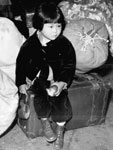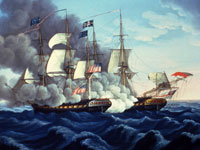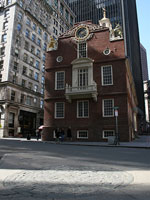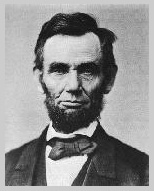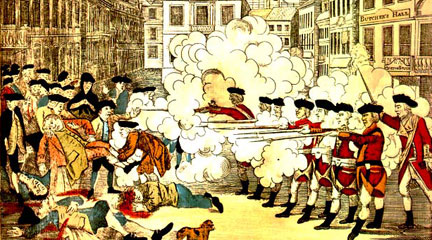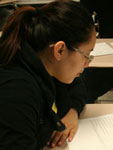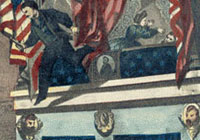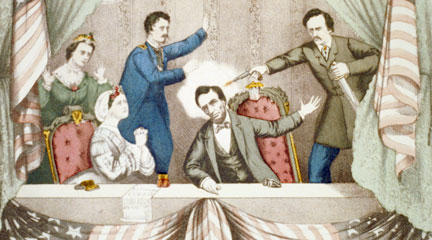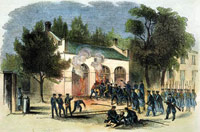Adapting Documents for the Classroom: Equity and Access
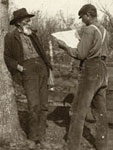
Preparing and modifying primary source documents so that all students can read and analyze them in their history classrooms.
Although they are useful for engaging students in the past, and teaching them to think historically, primary source documents often use antiquated or complex language. This can pose a challenge even for able readers, let alone those who read below grade level. Adapting a variety of historical documents for use in the classroom will allow students greater access to important reading and thinking opportunities.
Adapting documents for the classroom includes the use of excerpts, helpful head notes, and clear source information. It means adjusting documents for non-expert readers and making them shorter, clearer, and more focused. Adaptations can also include simplifying syntax and vocabulary, conventionalizing punctuation and spelling, cutting nonessential passages, and directing attention to a document's key components.
- Choose a document that is relevant to the historical question or topic that your class is studying. Consider what you want students to get out of the document. Will they try to unravel a historical puzzle? Corroborate another document? Dive deeper into a particular topic? Write a focus question for the lesson and the document.
- Make sure that the source of the document is clear. State whether you found it online or in a book, clearly identify when, where, by whom, and for whom the source was originally created.
- Create a head note that includes background information and even a brief reading guide. This helps students to focus on what they're reading while using background knowledge to make sense of it.
- Focus the document. Although some documents may seem too important to edit, remember that students may be overwhelmed by passages that look too long. Judicious excerpting with a liberal use of ellipses makes any document more approachable and accessible. If students are confused by ellipses, shorten documents without them.
Consider simplifying the document. This can include the following modifications, but use them sparingly and carefully:
- Cut confusing or nonessential phrases to make it shorter and easier to follow
- Replace difficult words with easier synonyms
- Modify irregular punctuation, capitalization, or spelling
Every adaptation is a tradeoff, so when in doubt, consider whether a particular adaptation is necessary for your students to access, understand, and analyze the document. Work on presentation. Brevity is important, especially in making a document student-friendly. Other techniques to render a document approachable include:
- Use of large type (up to 16 point font)
- Ample white space on the page
- Use of italics to signal key words
- Bolding challenging words
- Providing a vocabulary legend
- Devise a focus question to use with prepared documents. Introduce the question to your class and explain that reading each document will help them to answer it. (The focus question used in the example is "Why is the Homestead Act historically significant?")
- Explain that the document has been adapted to make it clearer and more useful for today’s lesson. You can provide students with the original and the adapted documents; or give them the adapted document, while projecting the original on a screen.
- Direct students’ attention to parts that have been added to the document. Show them the document’s source information—its author, and the circumstances of its publication—while discussing how such information can help them understand the contents of a document. Show them the head note.
- Identify words that have definitions provided, reminding students to underline or highlight other difficult words in the document in order to build vocabulary skills.
- Encourage students to notice any italicized words which indicate emphasis and to make notes in the margins as they read.
- Have students answer the focus question, using information and quotes as evidence from the document to support their answers.
Extension: As students become more adept with using documents, discontinue some of the reading supports. A useful companion lesson is to let students compare the original document with the edited version, to make explicit the modifications and consider whether they changed the document’s meaning or not.
- Candidly explain that students are working with documents that have been specially prepared for the classroom. A phrase such as "Some of the language and phrasing in this document have been modified from the original" posted at the bottom of the page may be useful. Make sure the original document is available to students and allow anyone interested to compare it with the adapted version.
- Do be careful, however, that the adapted document doesn't seem less valuable than the original. Emphasize to students that all historians struggle with using documents from the past. Adapting documents is simply a tool to help novice historians develop their skills and access rich content.
- Use this method also when students are using multiple documents. In this case, instructional steps may be added to assist students in considering how documents work together and to help them answer the focus question.
- The focus question should require that students read and understand the document, and use it as evidence in supporting their answers.
See here for original document, here for a transcribed version, and here for an adapted version of the Homestead Act of 1862.
See here for a transcribed version of "What to the Slave is the Fourth of July?" by Fredrick Douglass, and here for an adapted version of the document for use in a middle school classroom. To view the original document, see Foner, Philip. The Life and Writings of Frederick Douglass, Volume II Pre-Civil War Decade 1850-1860 (New York: International Publishers, 1950).
See here for an original version of John Smith’s "A True Relation." See here for an adapted version appropriate for an elementary school classroom.
For more examples of modified document sets, see Historical Thinking Matters. Select "Teacher materials and strategies," select one of the four topics, and then select "materials" and "worksheets." For original and transcribed versions of milestone documents in US history, see 100 Milestone Documents from the National Archives and Records Administration.
Biancarosa, Gina and Catherine E. Snow, Reading Next—A Vision for Action and Research in Middle and High School Literacy: A Report to Carnegie Corporation of New York, 2nd ed.Washington, DC: Alliance for Excellent Education, 2006.
Wineburg, S. and D. Martin. "Tampering with History: Adapting Primary Sources for Struggling Readers." Social Education (ex. 58, no 4) (2009).
